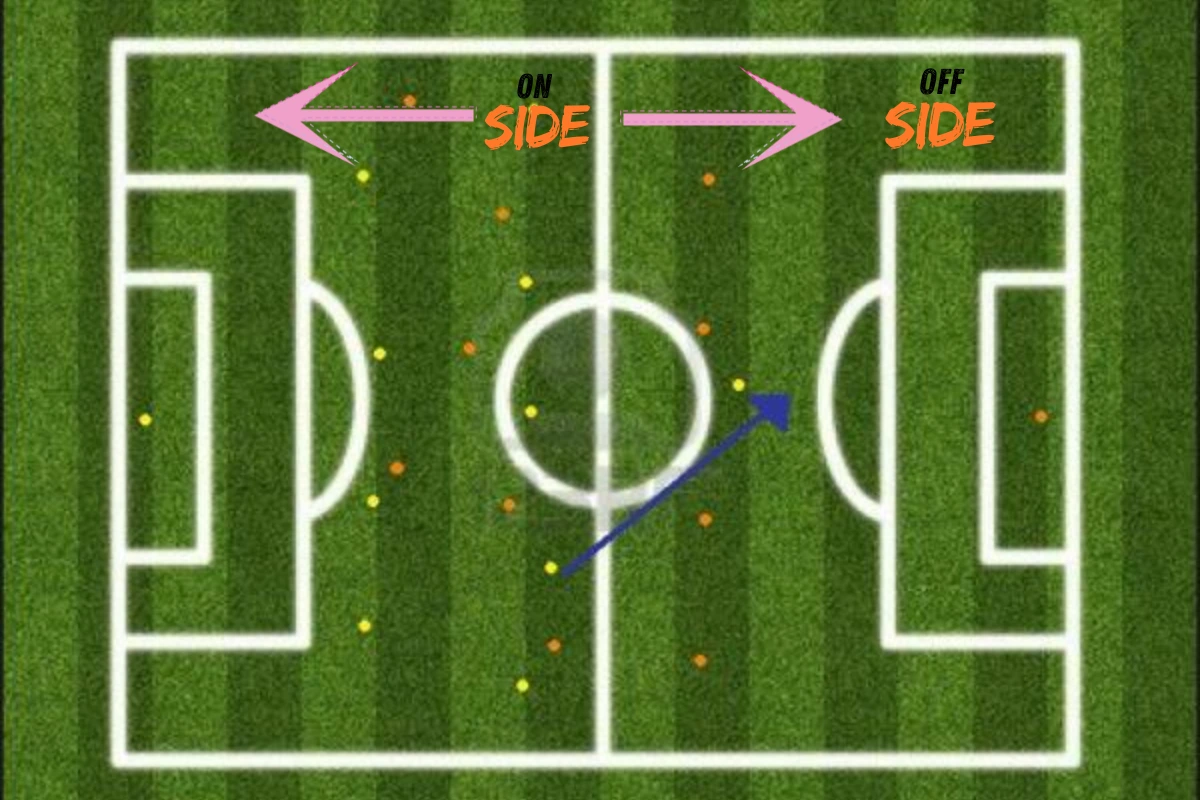Introduction
What’s the most argued-about rule in football? You guessed it—the offside rule! Whether you’re yelling at the TV or scratching your head during a local match, this rule has long puzzled players and fans. Understanding it isn’t just for referees—it’s a must for anyone who loves the beautiful game.
What is the offside rule?
At its core, the offside rule prevents attackers from congregating around the opponent’s goal, waiting for an easy pass to score. It’s designed to keep the game fair and encourage teamwork rather than “goal-hanging.”
When the ball is played to a player, they are offside if they are closer to the opponent’s goal line than the ball and the opponent who is second to last—unless they’re in their half.

Historical Background of the Offside Rule
Football’s early days were chaotic, with no clear guidelines about players’ positions. Over time, the offside rule was introduced to bring order to the game. Initially, it was even stricter, requiring three defenders to be between the attacker and the goal!
As football evolved, the rule was tweaked to promote more attacking play. The current version encourages faster and more engaging games, while also providing attackers with more room to operate.
How Does the Offside Rule Work?
Explaining the Key Criteria
For a player to be offside, two conditions must be met at the moment the ball is played by a teammate:
- They must be in a position that is closer to the opponent’s goal line than both the ball and the final defender.
- Active participation in the play is required, such as receiving the ball or obstructing an opponent.
The goalkeeper usually counts as one of the last two defenders, but not always!
When is a player considered offside?
Imagine this: your favorite striker runs past the last defender and scores a screamer. Everyone celebrates… until the flag goes up. That’s because when the ball was passed, they were already beyond the second-to-last defender.
It’s not enough to be in an offside position—the player must also be “interfering with play.” Just standing there doesn’t count.
Exceptions to the Offside Rule
There are a few moments when you can’t be offside:
- From a throw-in
- From a goal kick
- From a corner kick
These exceptions often surprise new fans, but they’re designed to keep certain parts of the game flowing.
Common Misunderstandings About Offside
Some people think any pass forward means an offside. Others believe a player can never run past defenders. Wrong! It’s all about the moment the ball is played and whether the attacker was beyond that last line.
Technology (VAR) has added more accuracy but also more confusion and controversy.
The Assistant Referee’s Role in Offside Decisions
In these calls, the assistant referee—the one holding the flag—is essential. They track the attacking line, watch for the moment the ball is played, and decide whether a player is offside.
VAR and the Offside Rule
VAR uses precise lines and replays to make decisions on tight calls. Although it reduces mistakes, it has generated controversy, particularly about minor “toe offside” rulings. Many fans argue it sucks the spontaneity out of goal celebrations.
Famous Offside Moments in Football History
Who can forget the 2010 World Cup when Argentina’s Carlos Tevez scored despite being miles offside? Or the countless goals chalked off by VAR in recent Premier League matches? These incidents serve as a reminder of the rule’s intense controversy.
Offside Trap as a Tactical Weapon
Some teams turn the offside rule into a weapon called the offside trap. Defenders push up suddenly to catch attackers offside, disrupting their rhythm.
Risks and Rewards of the Offside Trap
It’s a risky business—if attackers time their runs perfectly, they can break through on goal with ease. However, when done correctly, it can frustrate even the most skilled forwards.
Offside Rule in Different Competitions
While the basic rule is the same worldwide, interpretations can vary. In youth football, coaches often focus on teaching positioning first. In professional leagues, it’s all about exploiting or defending against the line.
Teaching Offside to Beginners
Explaining offside to kids can be like teaching a dog to solve a math problem! Start with cones and defenders, show them real-life examples, and use slow-motion video to illustrate the concepts. Visual learning works wonders.
The Psychological Impact of Offside Calls
Offside decisions can crush a striker’s confidence or ignite a coach’s fury. For fans, nothing is worse than celebrating a goal that gets ruled out.
Conclusion
The offside rule isn’t just a tedious technicality—it’s a fundamental part of football’s strategy and excitement. It shapes how teams attack, defend, and celebrate. Next time someone rants about offside, you can explain it like a pro!
FAQs
Q1: Can a player be offside in their own half?
Nope! You can’t be offside if you’re in your half when the ball is played.
Q2: Does touching the ball matter in an offside call?
Indeed. Active play is required, which typically entails touching the ball or obstructing an opponent.
Q3: Why do some offside calls seem so strict with VAR?
VAR checks the exact moment the ball leaves the passer’s foot and uses lines to measure—even a toe or shoulder can count.
Q4: Can a goalkeeper play a role in an offside decision?
Yes. The goalkeeper usually acts as one of the last two defenders, but if they’re out of position, another defender takes that role.
Q5: What happens if a player in an offside position doesn’t move toward the ball?
If they don’t interfere with play or opponents, no offside is given.
